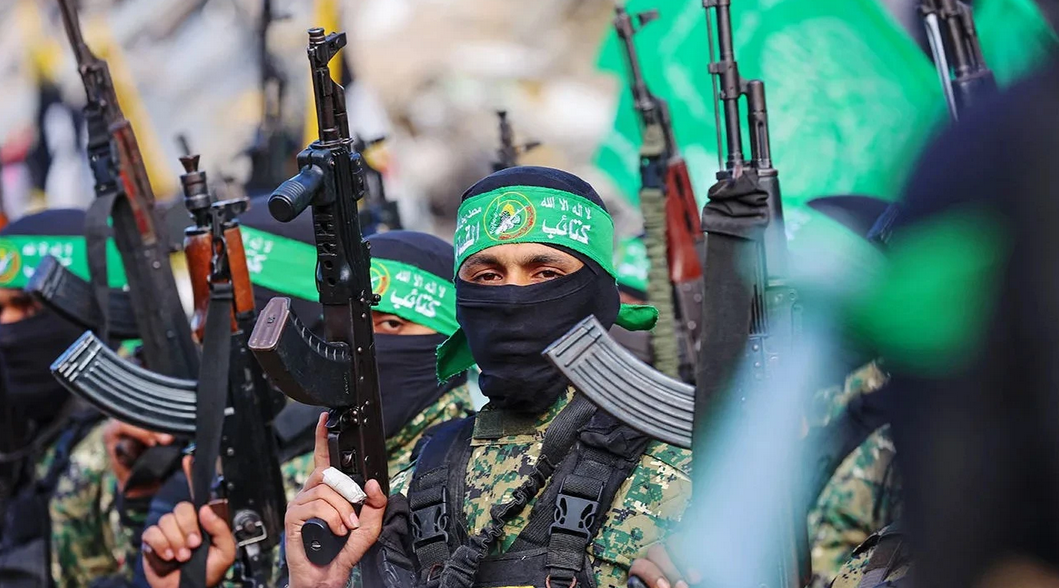Palestinian resistance factions condemned the passing of the UN resolution approving US President Donald Trump’s ceasefire plan for Gaza, saying Washington’s initiative amounts to a “new form” of occupation.
“Assigning the international force with tasks and roles inside the Gaza Strip, including disarming the resistance, strips it of its neutrality, and turns it into a party to the conflict in favor of the occupation,” Hamas said in a statement. “The resolution imposes an international guardianship mechanism on the Gaza Strip, which our people and their factions reject. It also imposes a mechanism to achieve the occupation’s objectives, which it failed to accomplish through its brutal genocide.”
It also reaffirmed its legal right to resist occupation by “all means.”
“This resolution seeks to achieve objectives the occupation failed to realize through its repeated wars. Even more dangerous is that it separates the strip from the rest of the Palestinian territories and imposes new realities that contradict the constants of our people and confiscate their right to self-determination, foremost among them the right to resist the occupation – a right guaranteed by all norms, laws, and international conventions,” said the Palestinian Islamic Jihad (PIJ) movement.
The Popular Front for the Liberation of Palestine (PFLP) affirmed “absolute rejection of the UN Security Council’s decision on the Gaza Strip, considering it an attempt to impose guardianship through the so-called ‘Board of Peace,’ which has been granted transitional and sovereign authorities that reproduce the occupation in a new form, sideline the Palestinian role, and strip the UN of its mandate.”
The Palestinian Authority (PA) Foreign Minister Varsen Aghabekian Shahin praised the resolution as a necessary “first step” on a “long road towards peace.”
US Ambassador to the UN Mike Waltz said the resolution “charts a possible pathway for Palestinian self-determination … where rockets will give way to olive branches and there is a chance to agree on a political horizon,” adding that “it dismantles Hamas’s grip, it ensures Gaza rises free from terror’s shadow, prosperous and secure.”
The UN Security Council (UNSC) approved Washington’s 20-point plan for Gaza early on 18 November, effectively placing the besieged strip under the control of US President Donald Trump.
UN Resolution 2803 passed by a vote of 13-0. Both Russia and China abstained. Algeria voted in favor of the resolution despite statements by Hamas and other resistance factions calling on the North African country to reject it.
The passing of the resolution has approved the formation of an International Stabilization Force (ISF) and the establishment of an interim technocratic government, which will be under the authority of a “Board of Peace” led by Trump.
The board will “be chaired by me, and include the most powerful and respected Leaders throughout the World,” the president said on social media.
This Board of Peace, according to the resolution, will act as an internationally recognized administrative body with legal international personality, tasked with governing, financing, and restructuring Gaza.
It will be in place for two years, with the possibility of further extension. The board will oversee the ISF, a Palestinian technocratic committee, and a local police force, and will be in charge of aid entry and reconstruction.
The ISF has been given powers to use “all necessary measures” to disarm all resistance factions and enforce the dismantling of all resistance infrastructure as a condition for eventual full Israeli withdrawal.
Until then, the occupation regime will be allowed to maintain a “perimeter” presence inside Gaza.
The resolution grants broad privileges and immunities to foreign personnel, including civilian and military actors operating under the Board of Peace and ISF – which will receive legal protections and operational freedom inside Gaza.
It also says that if the PA reforms itself “faithfully” and Gaza’s reconstruction advances, the “conditions may be in place for a credible pathway to Palestinian self-determination and statehood.”
